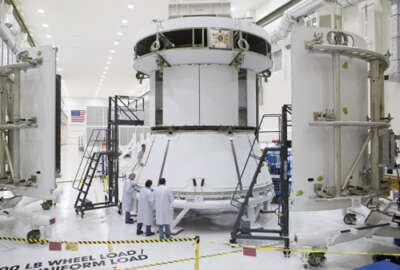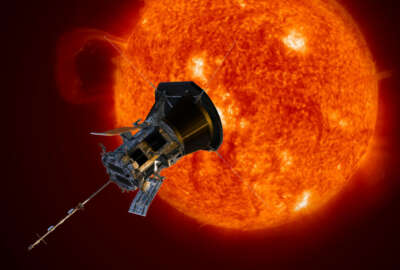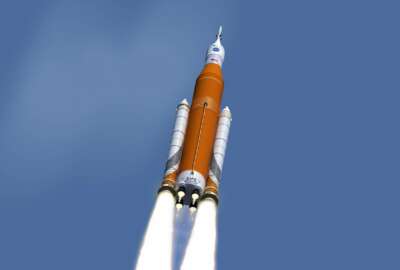
NASA aims to establish ‘Gateway’ to deep space exploration
NASA is embarking on a new era of space exploration in which humans will travel deeper into the solar system than ever before. Its Gateway platform in lunar orbit...
NASA is embarking on a new era of space exploration in which humans will travel deeper into the solar system than ever before.
Last December, President Donald Trump issued Space Policy Directive 1, in which he gave NASA orders to refocus its exploration efforts on the moon, with an eye toward eventually going to Mars and beyond.
That directive has NASA beginning the transfer of low-Earth orbit mission to the private sector immediately, allowing it to focus on long-duration human spaceflight operations.
Current plans have NASA sending a crew around the moon in 2023, followed by establishment of a human-based orbiting platform that will serve as a transit point to the lunar surface. That’s also where NASA will build and begin testing the systems needed for future exploration in the rest of the solar system.

At this point, the gateway is only a concept to be studied, not a new program or project. NASA has not officially proposed the mission in an annual U.S. federal government budget cycle and relative to other multi-billion dollar programs in NASA’s portfolio, only a small amount of money at this point is committed to conceptual studies such as these.
This would not be the case if the U.S. government is funded through Continuing Resolutions, a situation that is now common throughout the fiscal year and is currently in effect for Fiscal Year 2018.
The planning for the so-called Gateway platform and travel beyond is the responsibility of Jason Crusan, NASA’s Director of Advanced Explorations Systems.
“So much like when we went to explore the western side of the United States, you need an outpost by which you start and run campaigns from,” Crusan told Federal Drive with Tom Temin. “ Think of it as kind of a space port, a dry dock, where we build ships, refurbish ships and then we actually stage missions from it.”
The Gateway platform will be crew-manned part of the time. NASA will send spacecraft to the platform every 30 to 90 days for delivery of scientific experiments or infrastructure. When not manned, the Gateway platform will provide robust communications capabilities, even to the extent of serving as kind of a geo-communication satellite to monitor robotic missions on the surface of the moon.
Learning how to live away from Earth
Life beyond Earth’s orbit will be more complex than what has come before. It will mean developing new ways of thinking about how to sustain life in space. And if something goes wrong, a trip to the hospital will be days away. As Crusan put it: “ It’ll start teaching us how to live away from Earth safely.”
In order to do that, NASA will take a go-slow approach that is both scientifically wise and budget appropriate. Crusan said NASA wants to see a natural progression from working in low-earth orbit to handling the differences of working in deep space.
“We’re building a certain set of capabilities, in this case an orbiting platform with communications functions, some lander capabilities, and the ability for our life support systems to be sustained off-planet, away from Earth,” Crusan said.
“We build all those capabilities so the next thing we build is that much easier, so we are not starting from scratch on one program to the next,” he said. “We’re actually building on one capability to the next and leaving some of that critical infrastructure behind as we go from stage to stage. That makes the next step easier.”
Crusan said this kind of approach allows risk-taking that pushes the barriers of knowledge and technology. As opposed to the Apollo program, were risk-taking became less desirable after landing on the moon, Crusan said the ongoing nature of a research platform invites acceptable risk.
“Continuation of human space flight with a platform that’s out there conducting research on a regular basis versus the use of singular missions allows us to keep on weighing that risk and doesn’t allow us the easy way out,” Crusan said. “We shouldn’t stop doing the hard things. We should always be pushing that barrier of knowledge and technology and taking those risks in a reasonable way to keep on exploring, “
Making extended space travel possible for humans
Scientists are optimistic they can come up with the technological solutions for taking us deep into space. The question there is time and money. But will humans be able to make the trip? That is still being explored.
The International Space Station has provided some answers. It has given scientists a living experiment lab for testing isolation for long periods of time. One thing they have learned is the importance of space travelers having communications with friends and family back on earth.
When the message takes 40 minutes to travel round trip to Mars, however, the conversations are going to be more like texting or sending recorded messages. Still, Crusan said, those messages are incredibly important.
Also important is finding the right people for the job. People don’t always get along, and working in close proximity over long periods of time can create stress. Intervention could be challenging when it takes 40 minutes to get an answer. But Crusan said NASA spends a lot of time in selecting its astronauts, as well as understanding team dynamics and team building skills. More important, he said, is that NASA has found the mission can actually override the most stressful situation.
“You actually have to step back and say ‘wow, look what we’re doing,’” Crusan said. “You can tough it out for a week or two — even two or three years for a Mars-class mission, because of the enormity of the accomplishment that you’re about to achieve.”
Over the past 20 years of the space station, astronauts have experienced major events or family tragedies while circling the earth. Crusan said it’s important they be able to provide perspective from where they sit.
“That’s part of the storytelling that I think is important for our crew members and NASA to tell,” he said. “That’s why we send humans.”
Copyright © 2025 Federal News Network. All rights reserved. This website is not intended for users located within the European Economic Area.




